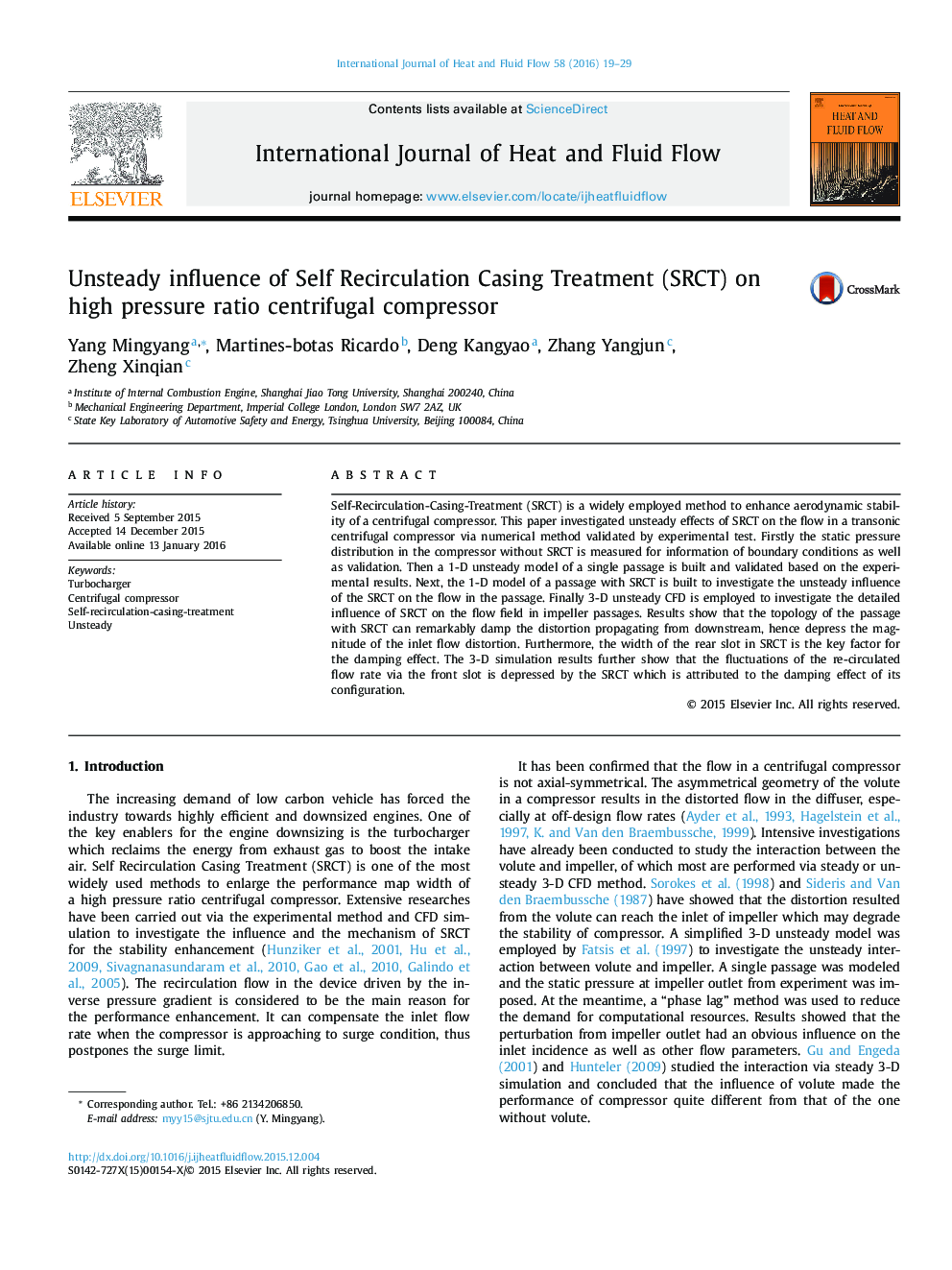| Article ID | Journal | Published Year | Pages | File Type |
|---|---|---|---|---|
| 655053 | International Journal of Heat and Fluid Flow | 2016 | 11 Pages |
•Reduced order model proves flow flucturations in impeller to be downstream disturbance propagation.•Fluctuations depression is attributed by the effect of energy bypass via rear slot of SRCT.•Flow distortion in diffuser results in disturbance with swing flow direction due to unbalanced forces.
Self-Recirculation-Casing-Treatment (SRCT) is a widely employed method to enhance aerodynamic stability of a centrifugal compressor. This paper investigated unsteady effects of SRCT on the flow in a transonic centrifugal compressor via numerical method validated by experimental test. Firstly the static pressure distribution in the compressor without SRCT is measured for information of boundary conditions as well as validation. Then a 1-D unsteady model of a single passage is built and validated based on the experimental results. Next, the 1-D model of a passage with SRCT is built to investigate the unsteady influence of the SRCT on the flow in the passage. Finally 3-D unsteady CFD is employed to investigate the detailed influence of SRCT on the flow field in impeller passages. Results show that the topology of the passage with SRCT can remarkably damp the distortion propagating from downstream, hence depress the magnitude of the inlet flow distortion. Furthermore, the width of the rear slot in SRCT is the key factor for the damping effect. The 3-D simulation results further show that the fluctuations of the re-circulated flow rate via the front slot is depressed by the SRCT which is attributed to the damping effect of its configuration.
